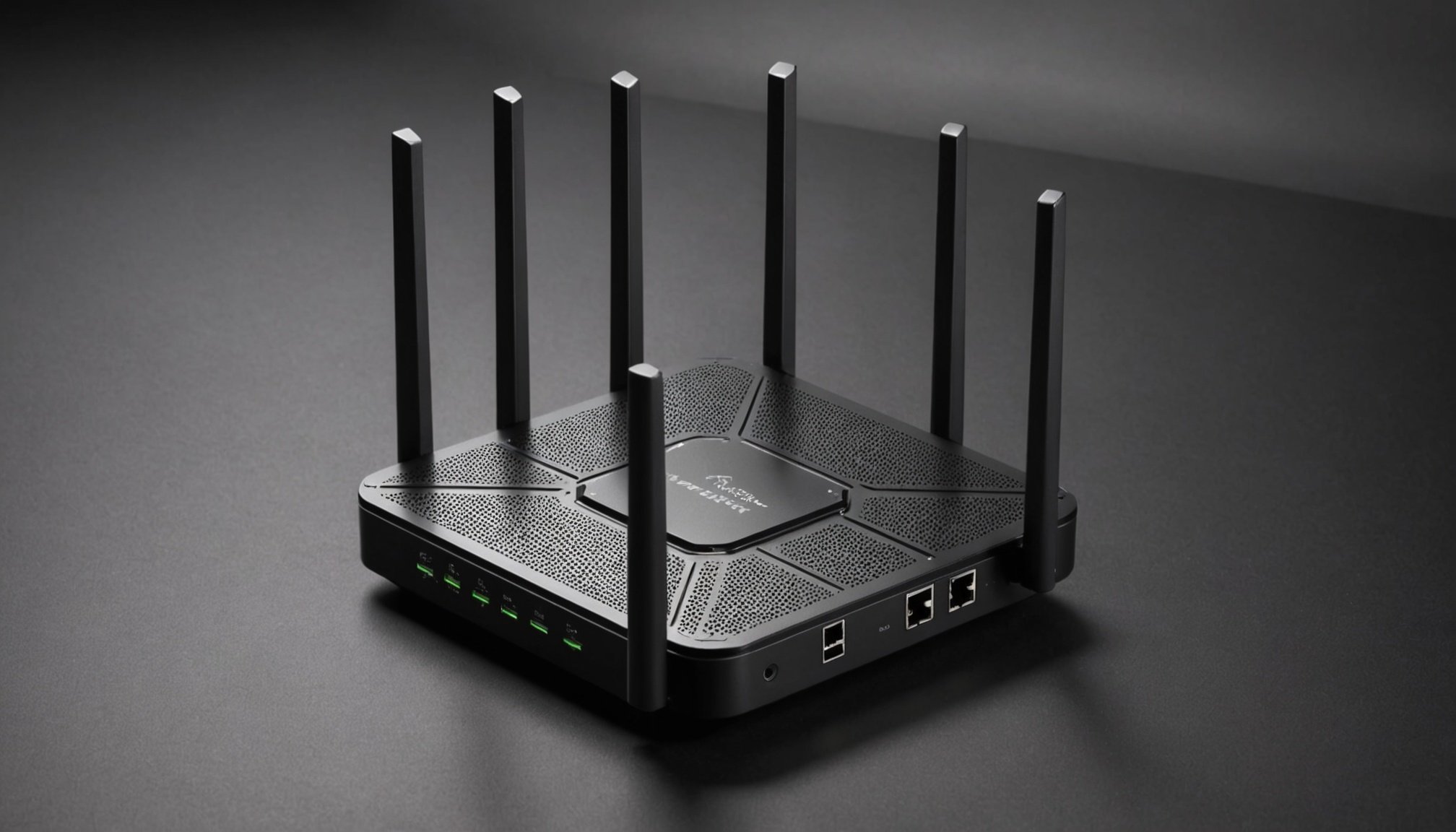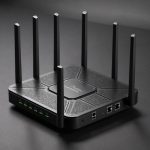Introduction to Mesh Networking with OpenWrt
In the realm of seamless connectivity, mesh networking emerges as a pivotal solution. At its core, mesh networking involves a network topology where each node connects directly, dynamically, and non-hierarchically to as many other nodes as possible, facilitating efficient data routing. This architecture is crucial in environments requiring robust, uninterrupted internet access, such as large homes or offices.
OpenWrt is a versatile open-source firmware meticulously crafted for routers and embedded devices. Its suitability for mesh configurations makes it a go-to choice for tech enthusiasts and networking professionals alike. OpenWrt provides a user-friendly interface while enabling customization and flexibility, essential for crafting the ideal mesh network setup.
In parallel : Mastering Secure Microservices Communication: Your Ultimate Guide to Essential mTLS Techniques
Benefits of Mesh Networking with OpenWrt
Utilizing OpenWrt for mesh networking brings several key benefits. The firmware’s customizable nature allows for tailored solutions, optimizing coverage and performance based on specific needs. Moreover, OpenWrt supports various devices, promoting device interoperability and future-proofing your network setup. This adaptability ensures that users can modify and upgrade configurations without needing entirely new hardware, a cost-effective solution. Additionally, OpenWrt’s open-source nature encourages community collaboration, fostering a wealth of shared knowledge and improvements over time.
Preparing for OpenWrt Installation
Before beginning the OpenWrt installation process, it is essential to ensure all hardware and software requirements are met. To proceed, you will need a compatible router. Checking device compatibility with OpenWrt is a crucial step and can be done by visiting the OpenWrt website, where a comprehensive list of supported devices is available.
Also to read : Mastering Disaster Recovery: The Complete Blueprint for Protecting Kubernetes Clusters in Multi-Cloud Landscapes
Once you’ve verified compatibility, preparing for installation involves a few key steps. Firstly, ensure you have an Ethernet cable to establish a direct connection between your computer and the router. Secondly, download the appropriate OpenWrt firmware version for your device model, ensuring it aligns with your router’s specifications.
Pre-installation configurations are of the utmost importance. Begin by backing up your current router settings to prevent loss of information. Disable wireless connectivity to avoid network conflicts during installation. It’s advisable to reset the router to its factory settings, providing a clean slate for the new firmware.
These preparatory steps pave the path for a successful OpenWrt setup, maximising the chances of a seamless installation. By understanding and implementing these measures, you’ll not only ease potential troubleshooting challenges but also optimise your router for mesh networking capabilities with OpenWrt.
Installing OpenWrt on Your Router
OpenWrt installation involves a few essential steps for transforming your router into a robust mesh network node. Start by ensuring you have the correct version of the OpenWrt firmware for your device. This is critical for compatibility and functionality. Once downloaded, proceed with the firmware flashing process.
- Connect your router to a computer using an Ethernet cable for stability during installation.
- Access your router’s interface via a web browser by entering its IP address. Usually, it resembles “192.168.1.1”.
- Locate the firmware upgrade section in the settings. This may vary slightly between models, but it’s typically under maintenance or administration.
- Load the downloaded OpenWrt firmware file and commence the update process.
During installation, configure important settings such as the router’s Wi-Fi passwords and network names (SSID) for security and clarity. After flashing, your router will reboot. Verify a successful installation by accessing the OpenWrt interface and ensuring initial connectivity. This interface provides intuitive navigation, which supports your network crafting efforts. Accomplishing these steps lays the foundation for a seamless and flexible mesh network supportive of your unique internet needs.
Configuring Mesh Networking
Setting up a robust mesh network with OpenWrt involves understanding various mesh network topologies. Each node, or access point, connects dynamically to other nodes, creating a seamless path for data flow, which is critical for maintaining connectivity across large spaces.
Steps to Configure Nodes
To configure nodes in your mesh network, first ensure each device runs the OpenWrt firmware. Start by accessing each node’s interface and enable the mesh Wi-Fi mode. Assign each node a unique identifier but maintain consistency in SSID names across all nodes for unified network management. Crucially, selecting the optimal channel frequency minimises interference.
Best Practices for Node Placement
Strategically placing mesh nodes impacts network efficiency. Nodes should ideally be in open spaces, avoiding walls when possible. Aim for nodes to be within line of sight of each other. Regularly test signal strength between nodes to ensure consistent coverage.
Connection Optimization
For optimal connection quality, adjust node transmission power as needed, but avoid maximum settings unless necessary to prevent cross-talk. Properly configured nodes ensure robust and reliable connectivity, capitalising on the dynamic nature of mesh networking.
Advanced Features in OpenWrt for Mesh Networking
OpenWrt offers a variety of advanced features that significantly enhance mesh networking capabilities. These features provide flexibility for custom configurations tailored to your specific needs.
Exploring Advanced Settings
Advanced settings, such as Quality of Service (QoS), allow for prioritising traffic, ensuring crucial data transfers receive bandwidth precedence. Delve into VLAN configurations for segmenting network traffic, which can increase security and efficiency in large networks.
Custom Scripts and Packages
OpenWrt’s modular architecture supports adding custom scripts and packages to automate functions or extend capabilities. For instance, integrating packages like batman-adv offers simplified mesh coordination, improving network performance. Custom scripts can be crafted to automate routine tasks like monitoring network health.
Techniques for Managing Network Load
Effectively manage network load and bandwidth by employing features such as load balancing, which distributes traffic evenly across nodes. Tools like Collectd and Luci Statistics provide real-time monitoring, allowing fine-tuning based on network consumption patterns. Use these insights to adjust settings for peak performance.
These advanced functionalities not only bolster your network’s responsiveness and efficiency but also ensure a more robust and adaptable mesh setup. By leveraging custom configurations, your OpenWrt mesh network can achieve optimum utilization of resources for a superior connectivity experience.
Troubleshooting Common Issues
In the realm of mesh networking with OpenWrt, addressing and resolving common connectivity issues is key to maintaining a stable network environment. Frequently encountered problems often stem from misconfigurations or interference. To tackle these, start by identifying the root cause using various diagnostic tools.
OpenWrt offers several commands and tools for effective diagnostics. For instance, using the ping and traceroute commands can help detect network latency and connectivity issues between nodes. Additionally, the logread command provides access to system logs, which can be invaluable in pinpointing failures or missteps during setup. Regularly checking these logs can preemptively highlight issues before they escalate.
To maintain a stable mesh network, consider these troubleshooting tips:
- Ensure firmware is updated to avoid known bugs.
- Regularly reboot routers to erase cached errors.
- Adjust node placement if interference is suspected.
Furthermore, leveraging community support is crucial. Engaging forums or online resources dedicated to OpenWrt troubleshooting can yield solutions drawn from collective experiences. By employing these diagnostic and troubleshooting strategies, you can ensure a more reliable and resilient mesh network setup using OpenWrt.
Frequently Asked Questions
When delving into the world of OpenWrt and mesh networking, users often encounter similar challenges and queries. Here’s a guide to address these common questions and facilitate smoother experiences.
How do I ensure the best performance in my OpenWrt mesh network? Achieving optimal network performance involves regular performance tuning. Focus on strategic node placement, consistent SSID usage, and selecting channels with minimal interference. Monitoring tools available in OpenWrt can guide you in making necessary adjustments for peak performance.
What should I do if my mesh network experiences frequent disconnections? Investigate using diagnostic tools such as ping and traceroute. These command-line utilities help pinpoint latency or connectivity issues. Cross-reference logs with logread to identify potential misconfigurations.
How can I tap into community support for OpenWrt? The robust OpenWrt community is an invaluable resource. Engaging with forums or online groups dedicated to FAQs OpenWrt allows you to tap into collective knowledge. Users often share insights, scripts, and solutions that can significantly enhance your network setup.
For those keen on expanding their OpenWrt knowledge, these networks often provide resources for further learning, enriching your understanding and application of mesh networking concepts.
Optimizing Mesh Network Performance
Enhancing mesh network performance is crucial for ensuring reliable and speedy connectivity. Implementing strategic network optimization techniques can lead to substantial improvements in both speed and reliability, ultimately maximising the system’s efficiency.
Strategies for Speed and Reliability
- Remove Bottlenecks: Identify and eliminate any network bottlenecks that may cause slowdowns. This often involves optimising node placement to reduce data travel distances.
- Prioritize Traffic: Use Quality of Service (QoS) settings to manage network traffic effectively, prioritising time-sensitive data like video conferencing over less critical tasks.
- Channel Selection: Choose Wi-Fi channels with the least interference to reduce signal congestion and improve transmission quality.
Monitoring and Adjustments
Regularly monitor network performance to identify any underlying issues. Tools integrated within OpenWrt, such as Luci Statistics, offer insights into data usage and network load. Use this information to make informed adjustments, tuning node configurations or network settings as necessary.
Real-world Examples
Consider a household experiencing lag during video streaming. By fine-tuning the Quality of Service settings and repositioning nodes for optimal coverage, users can notice substantial speed improvements. Incorporating these measures transforms how efficiently a mesh network can function, enhancing overall usage experience.
Conclusion and Next Steps
Embarking on the OpenWrt journey offers a world of exploration within the community of mesh networking enthusiasts and experts. Engaging in OpenWrt community forums not only nurtures learning but also opens up avenues for shared experiences and effective solutions. These forums are invaluable for tackling specific technical issues and gaining insights from seasoned users.
For those keen on deepening their knowledge, a plethora of resources for advanced users awaits. From detailed guides to in-depth video tutorials, learning opportunities are abundant. These resources are designed to support your growth, helping you master complex configurations and advanced network settings.
Continual learning is crucial in the ever-evolving realm of mesh networking. As new technologies and methodologies emerge, staying updated ensures that your network remains cutting-edge and efficient. Exploring new topics, such as security enhancements and innovative configurations, further enriches your networking prowess.
By actively participating in OpenWrt community discussions and leveraging available resources, you solidify your standing as an adept network professional. This proactive approach not only elevates your expertise but also contributes positively to the wider community, fostering a collaborative environment where knowledge and experiences are freely shared.











